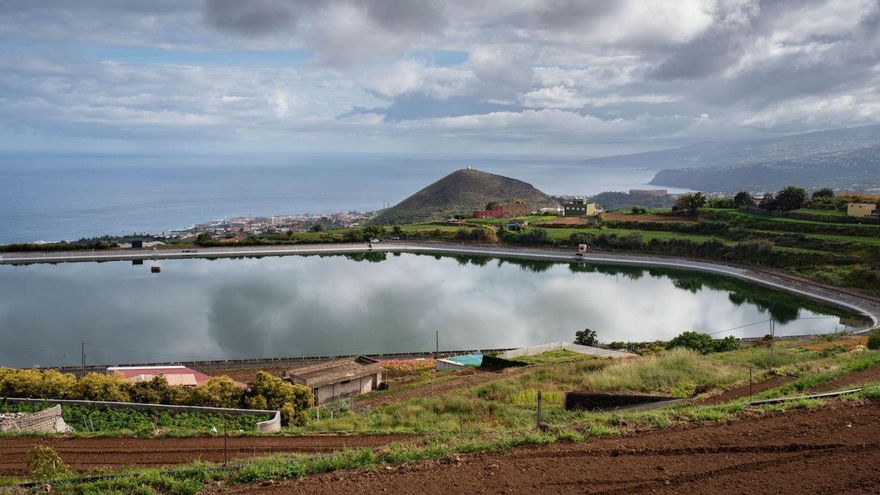
Reclaimed water guarantees the supply of irrigation water in the Tenerife countryside, both in quantity and quality, to face next summer. It is affirmed by the Minister of Agriculture, Livestock and Fisheries of council, Javier Parrilla, who recalls that the storage level of treated wastewater in the south of the island reaches 96%. That, he values, “gives farmers stability, quality and security.” Parrilla ratifies the commitment to reclaimed water: “Wherever it intervenes, with additional contributions from desalination, there is greater quantity and quality.”
According to Balten’s reports, the global level of storage in the south, which stands at 82 percent –including the Trevejos raft in Vilaflor–, is also the right one to face the summer.
Parrilla recalls that, in 2020, “during the hardest months of the pandemic”, the Cabildo promoted the connection between the conduction of the Niágara and Tágara galleries with the Trevejos raft. With this, he explains, “high quality water was transferred, previously directed to the coastal areas, replaced by the desalinated water that comes from the Fonsalía desalination plant.”
Northeast and North counties
The manager of Balten, Ana Sánchez, assures with regard to the northeast region, that “intense work has been done to make possible a change of model similar to that of the south, but with the deployment of reclaimed water at low levels”. It will be promoted from the Northeast Wastewater Treatment and Regeneration Station (EDRAR), in Valle Guerra, to the Valle Molina reservoir, in Tegueste, which will allow the Tejina, Tegueste and Valle de Guerra basins to be irrigated with quality water.
The northern slope, meanwhile, increases storage levels from 55 to 61% (225,355 cubic meters more, about 90 Olympic swimming pools). “And this despite the fact that the pool in the Benijos ravine, in La Orotava, is being emptied for re-waterproofing,” Javier Parrilla points out.
Finally, Isla Baja has increased its level of stored water by 115,133 cubic meters (equivalent to 46 Olympic swimming pools), thanks to the purchase of desalinated seawater from the La Monja desalination plant.
“It has been shown that the strategy of substituting water at low elevations for regenerated and/or desalinated water bears fruit, with greater global energy efficiency, as the gallery waters are located at higher elevations in the midlands,” Parrilla stresses. He concludes: “This, together with the desalinated waters at medium elevation, generates stability and quality in the supplies of the basins.”
Aid in land recovery
Javier Parrilla highlights the fact that Tenerife has increased its cultivated area by 1,119 hectares, reaching 18,738, according to recent data from the Crop Map of the Canary Islands. The insular responsible for the primary sector highlights the importance of this study, “which allows us to know the reality of the agricultural area and will serve as a basis for promoting more accurate and effective agricultural policies.” He recalls that between 2007 and 2019 the Island registered a decrease of 7,000 hectares, “but we have started the recovery with effort.” The counselor emphasizes that this year the Cabildo will launch a call for aid for the recovery and cultivation of abandoned land, which will have a budget of 48,730 euros. In the same way, the Agrojoven Awards stand out, endowed with 20,000 euros, and the José Luis Porcuna agri-food scholarships, for which an item of 21,600 euros has been allocated. According to the report, orchards continue to be the predominant cultivated area in Tenerife (43% of the total), followed by bananas (20%), vineyards (15.6%) and fruit trees (12.7%). Ornamental crops are limited to 1.9% and tomato maintains the negative trend that had already been detected since previous campaigns, and currently stands at 0.5%.















